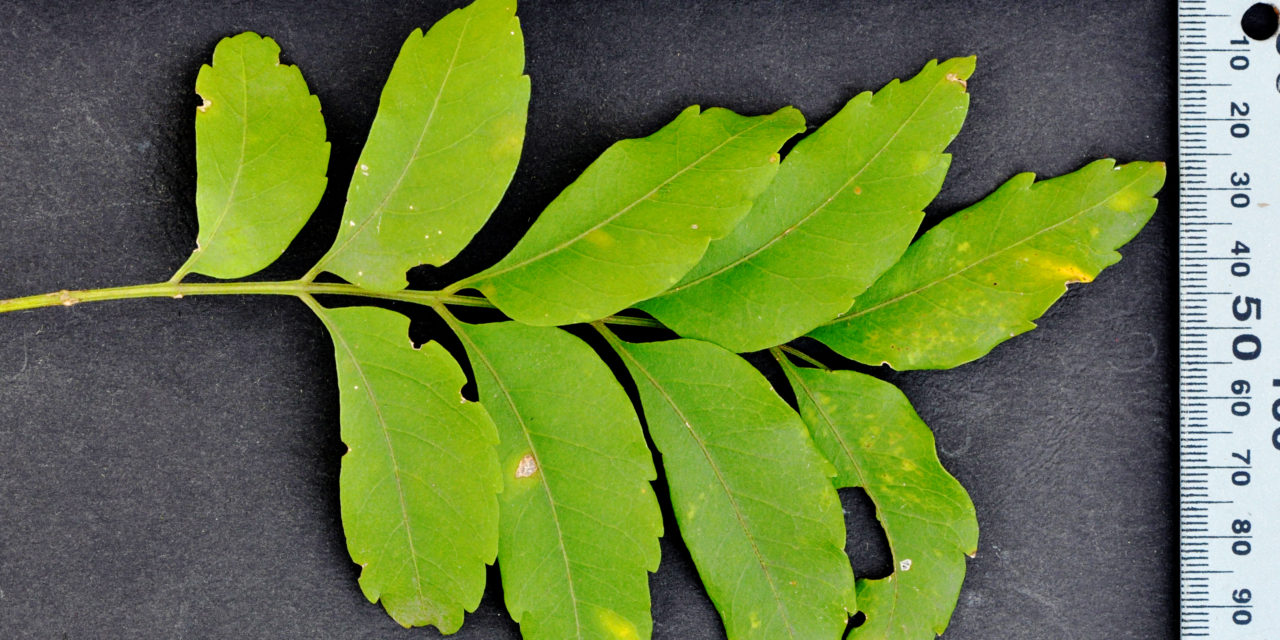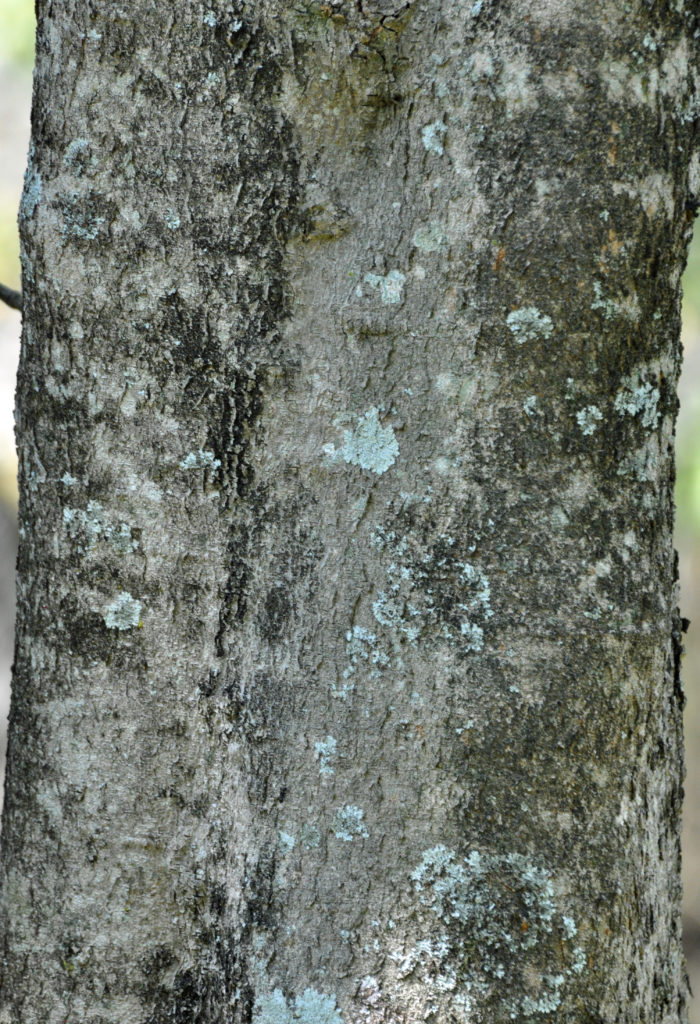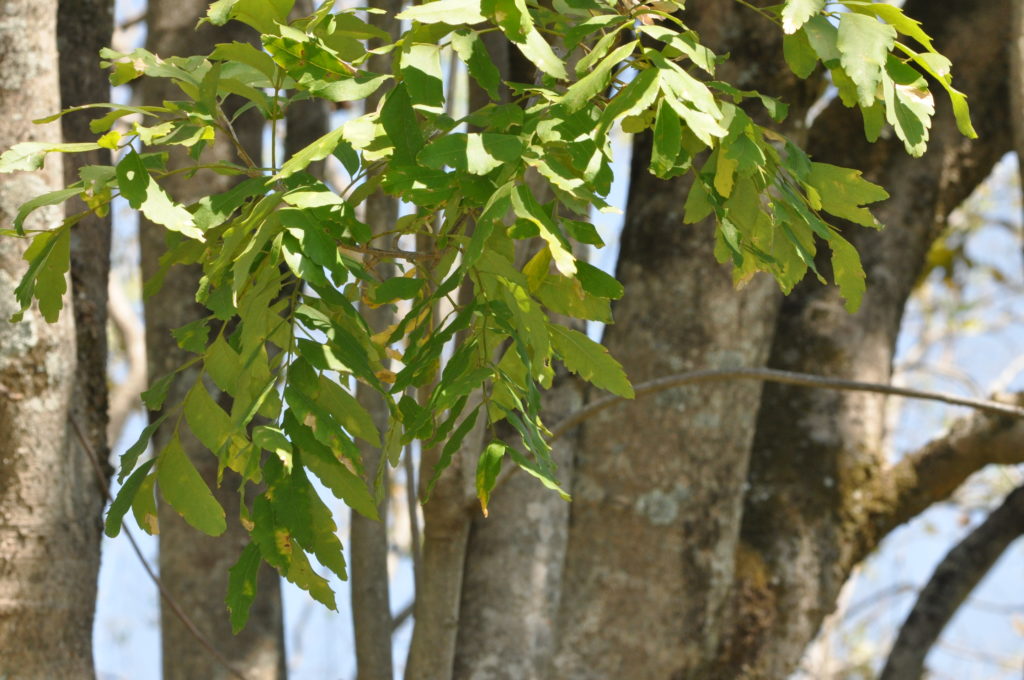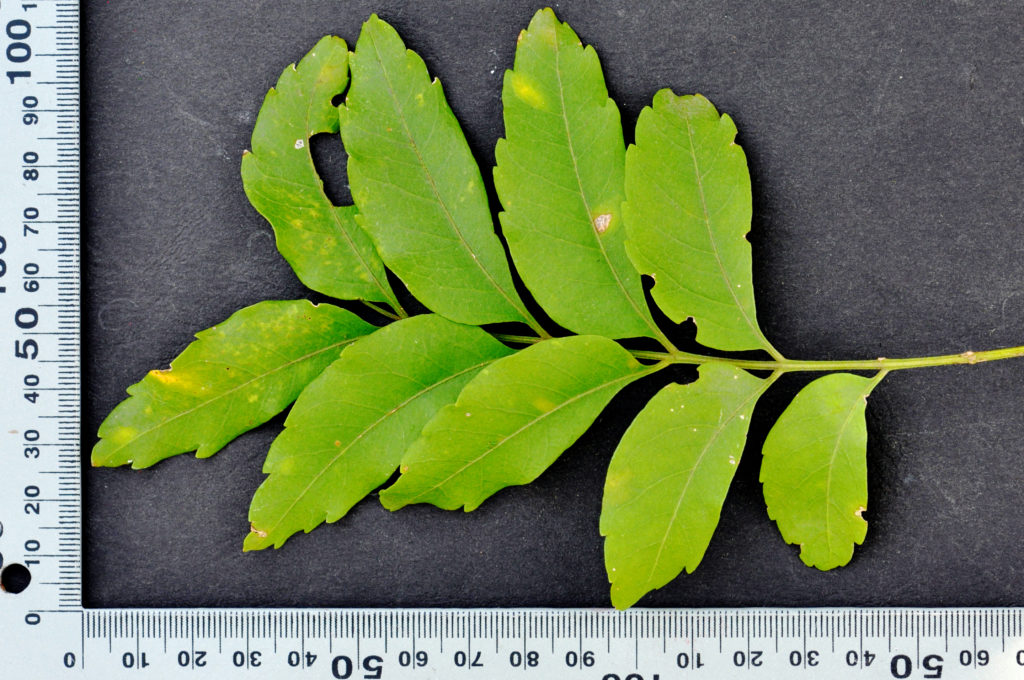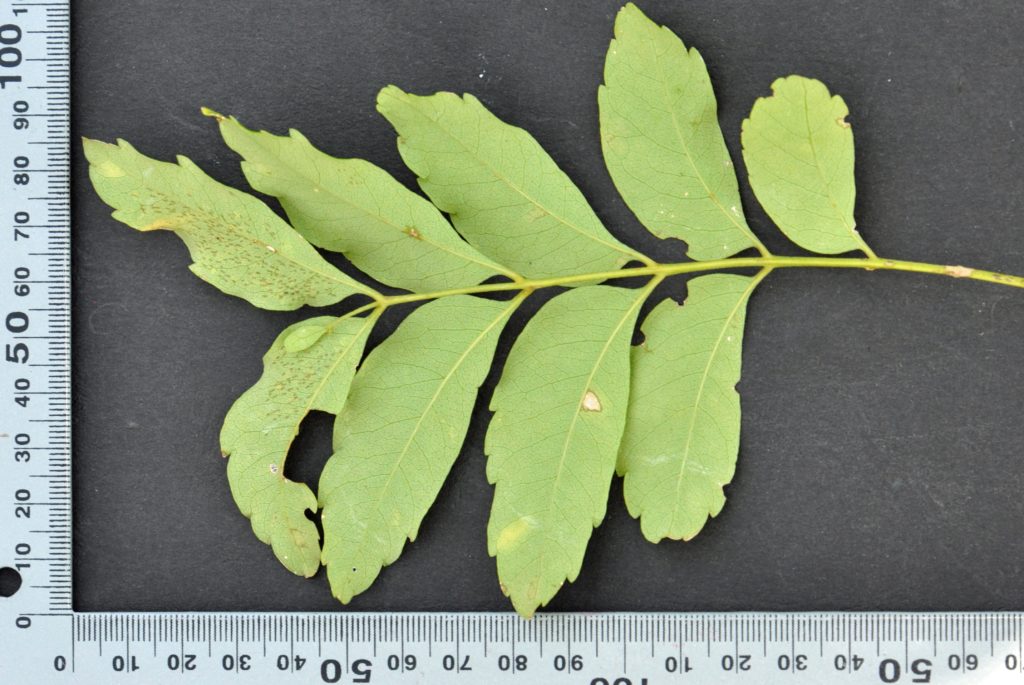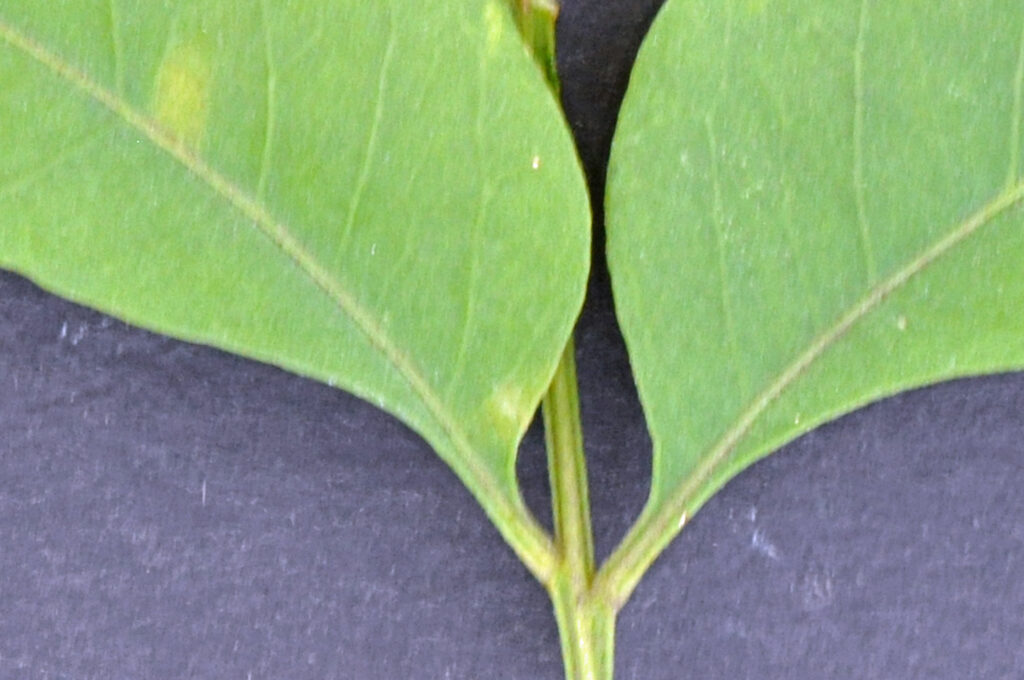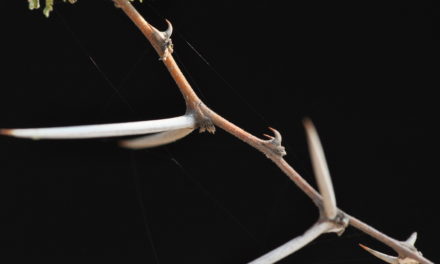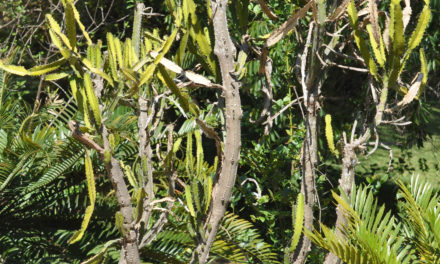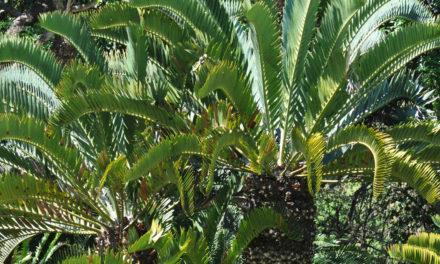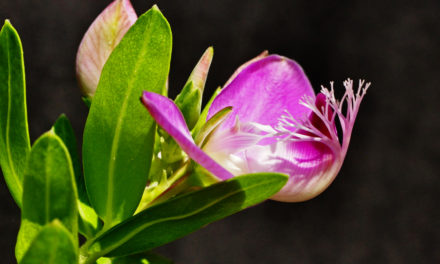Atalaya alata
General Info – summary
This deciduous, much branched Tree with fluted trunk, sparse crown & warty bark is up to 12m high. The paripinnate and asymmetric Leaves are up to 22cm long. Leaflets are sickle shaped. Tiny, bisexual, white, 5-merous, Flowers in terminal panicles. Stamens: 10 with 2 aborted. Single pistil has a superior ovary. The hairless, winged Fruit is a brown nut to 3,5 x 1,5cm. Ellipsoidal seeds have a papery testa.
Description
Previous Names: Diacarpa alata.
SA Tree No. 427.
Common name: (Afr) Lebombo Krans-es, Lebombo Krans-esseboom, Lebombokransesseboom. (Eng) Lebombo Krantz Ash, Lebombo Krantz-ash, Winged atalaya. (isiZulu) Inona, Umnondo. (siSwati) Umnondo. Here krantz refers to a precipitous or overhanging wall of rocks in southern Africa.
Family: Sapindaceae: (Soapberry and Litchi family). This family has 135 genera and about 1 800 species including lianas, herbs and trees. The alternate, usually pinnately compound Leaves often lack stipules (leaf stalk) and have a swollen base. The small, usually unisexual, Flowers may be regular or irregular and develop in racemes or panicles. The Calyx has 4-5 lobes and, when present, the Corolla has 3-5 petals. There are between 5 and 24 Stamens, which have free Filaments and the Anthers have 2 pollen sacs. The superior Ovary usually has 1 style with a stigma. There are 27 species in 14 genera in southern Africa. Local genera with trees on this website include Allophylus, Atalaya, Dodonaea, Erythrophysa, Filicium, Hippobromus, Pappea, Smelophyllum and Stadmannia.
Name derivation: Atalaya: East Timor name: Atalai. alata: winged – referring to the fruit. Until Atalaya capensis was discovered and identified in the 1930’s the genus Atalaya was considered to be only located in Timor, Australia and the southern Malay Archipelago. A total of 3 species have been discovered in southern Africa.
Conservation: National Status: L C. (Least Concern). Assessed: Raimondo et al. (2009)
Tree
This graceful much branched Tree with its sparsely branched crown is up to 12m high but is usually about half this height. It has a straight and much branched Stem (main axis of the plant, the leaf and flower bearing as distinguished from the root-bearing axis). The light grey or whitish even warty Bark (photo 699) may be seamed crosswise and becomes fluted (grooved, funnelled, channelled). The slender Branchlets are green to grey (photo 705).
- 699. 2014.09/14. Lowveld NBG. Photo: David Becking.
- 705. 2014/09/14. Lowveld NBG. Photo: David Becking.
Leaves
Each slightly drooping Leaf on this tree is paripinnate (compound leaf ending in a pair of leaflets – photo 701). Here the aborted tip between the end pair of leaflets is visible. This aborted tip forms part of the narrowly winged leaf Rachis (main axis bearing flowers or, in this case leaflets). The large leaves are up to 22cm long and tend to droop. Prior to falling in autumn, the leaves on this deciduous tree turn a golden yellow. The impressive new leaves are a bright green. Each of the 5-7 pairs of narrow and opposite or nearly so Leaflets are up to 7 x 2cm and are elliptic or ovate and almost sickle-shaped. The Apex is rounded or bluntly pointed. The Midrib (a continuation of the leaf stalk or petiole) is more visible closer to the lower margin and is easier to see on the lower side (photo 702). These thinly textured leaflets are markedly asymmetric (not equal to the opposite side) – especially near the Base (photo 704). New leaves are bright green. On mature leaves, the base is cuneate (wedge-shaped: triangular with a narrow endpoint of attachment) and the lower surface is a lighter green compared to the upper darker green surface. The leaf Margins along the upper edge are more toothed– especially towards the leaf apex (photo 701). In Atalaya capensis the leaflets are usually less toothed. In Atalaya alata the slightly hairy Petiole (leaf stalk) is up to 3cm long. Petiolules (stalks of leaflets) are up to 4mm long (photo 701). Stipules (basal appendages of the petiole) are absent. Crushed leaves do not have a strong smell.
- 701. 2014/09/14. Lowveld NBG. Photo: David Becking.
- 702. 2014/09/14. Lowveld NBG. Photo: David Becking.
- 704. 2014/09/14. Lowveld NBG. Photo: David Becking.
Flowers
Large numbers of very small (up to 5mm in diameter) attractive white, bisexual and 5-merous Flowers develop at branchlet ends in terminal panicles (indeterminate, branched inflorescence with stalked flowers). Pedicels (stalks of single flowers) are very short: up to 1,5mm. This inflorescence (a group or cluster of flowers arranged on a stem) may extend up to 15cm long. The Calyx has 5 tiny Sepals that may reach 3mm in length. They are imbricate (having regularly arranged, overlapping edges, as roof tiles or fish scales). The 5 unequal Petals are usually shorter than the sepals. They have hairy appendages on the inner face. The Disc (a more or less fleshy or elevated development of the receptacle) has a diameter up to 2,5mm. It is fleshy and expanded at base with the margin slightly notched. 8 Stamens remain after 2 have aborted. They arise from within the disc. The bases of the Filaments are hairy. The Anthers have 2-theca (each with 2 pollen sacs) and end in a short, sharp, flexible point. There is a single Pistil (a unit of the Gynoecium, the female element of the flower, composed of the Ovary, Style and Stigma). Here the superior Ovary is 3-locular and each locule (compartment within an organ) has a single Ovule. The short Style ends in a simple Stigma. (Sep-Dec).
Fruit
The hairless dry brown Fruit is a Nut (indehiscent, usually 1-seeded but 3 may develop) hard bony fruit. It has 3 propeller-like wings that are distinctly veined. Up to 2 of these may not develop fully. The stiffly membranous wings are green, flushed with almost butterfly like rosy-red colour. The nuts may be 3 winged but one or 2 may not develop. Nuts are up to 3,5 x 1,5cm and develop in terminal clusters. Seeds are ellipsoid with a papery Testa (seed coat). They lack endosperm (the starch and oil-containing tissue of many seeds; often referred to as the albumen). (Jan-May).
Distribution & Ecology
These rare Trees are located on rocky slopes including at high altitude river gorges e.g., Crocodile River Gorge. Plants also occur in valleys and watercourses of the Lebombo Mountains (800km long – running N-S from Punda Maria in Limpopo province to Hluhluwe in KwaZulu-Natal. They also occur in the bushveld (a sub-tropical woodland ecoregion of southern Africa). The plant also grows in northern, Mpumalanga e.g., southern Kruger National Park, and in Limpopo. Beyond South Africa they occur in south west Mozambique and western Eswatini (Swaziland). The plant is thus endemic (restricted to a particular geographic location) in southern Africa. Leaves are food plant for emperors: genus Charaxes (large butterflies). Elephants browse the Tree.
Ethnobotany
The Wood has a relatively low density, is fine textured and a light yellow to white colour. Propagation is through Seeds, which take up to 6 weeks to germinate. These plants grow best in hot, dry areas. They provide a light shade area and should be protected from frost when young. The leaves and bark make this an attractive garden prospect
References
Boon, R. 2010. Pooley’s Trees of eastern South Africa. Flora and Fauna Publications Trust, Durban.
Burrows, J.E., Burrows, S.M., Lotter, M.C. & Schmidt, E. 2018. Trees and Shrubs Mozambique. Publishing Print Matters (Pty) Ltd. Noordhoek, Cape Town.
Coates Palgrave, M. 2002. Keith Coates Palgrave Trees of Southern Africa, edn 3. Struik, Cape Town.
Lawrence, G. H. M, 1951. Taxonomy of Vascular Plants. The Macmillan Company, New York. Tenth Printing 1965.
Palmer, E. & Pitman, N. 1972. Trees of southern Africa. Balkema, Amsterdam, Cape Town.
Schmidt, S. Lotter, M. & McCleland, W. 2002. Trees and Shrubs of Mpumalanga and the Kruger National Park.
van Wyk, B. & van Wyk, P. 1997 Field guide to Trees of Southern Africa. Struik, Cape Town.
Victor, J.E. & van Wyk, A.E. 2005. Atalaya alata (Sim) H.M.L.Forbes. National Assessment: Red List of South African Plants version . Accessed on 2025/02/23.
http://www.plantzafrica.com/plantab/atalayaalata.htm.
http://posa.sanbi.org/flora/browse.php?src=SP
http://suntrees.co.za/atalaya-alata-lebombo-krantz-ash-lebombo-kransesseboom-2/
http://plants.jstor.org/search?filter=name&so=ps_group_by_genus_species+asc&Query=Atalaya+alata

